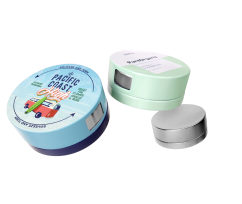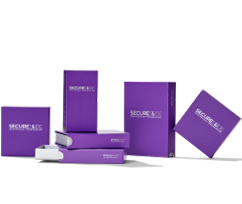Compostable Packaging Myths Debunked
Did you know that the world generates approximately 300 million tons of plastic waste each year and that 60% of this plastic waste is not recycled? Instead, it persists in environmental landfills, leading to significant threats to human life, animals, and nature.
But today, modern consumers are ready to pay extra for products with sustainable packaging in an effort to reduce their carbon footprint. As such, eco-friendly packaging manufacturers, retailers, and other businesses are developing or using innovative technologies to help reduce harmful plastic waste.
However, industry experts criticize many companies who claim to offer compostable packaging options with sustainable benefits since they sometimes peddle falsely labeled products. So, join us as we debunk the lies and myths surrounding compostable packaging.
What Are Common Myths About Compostable Packaging?
It should be easy to celebrate compostable packaging because of the many promising benefits this innovative technology offers our environment, but many people are confused about how this technology actually works.
Is compostable packaging child-resistant? Can it be used for food packaging? Can you trust the authenticity of companies that claim to offer this option?
Compostable packaging materials must conform to ASTM D6400 protocols to decompose and fully disintegrate in a commercial composting facility in 180 days.The ASTM test method uses a set of conditions that favor microorganisms that thrive above 140° F, making the test unsuitable for representing composting conditions in a home compost facility. Compostable packaging often takes longer to break down naturally. Therefore, the compostable materials must go through an industrial compost facility where they break down under the right conditions.The result is a nutrient-rich, non-toxic organic matter that helps plants thrive when incorporated into the soil.
So, let’s debunk some of the many myths that dictate your response to compostable packaging products. Here are some of the most common myths to help you forego these misconceptions.
Myth #1: Biodegradable Always Means Compostable
Most people use these two terms interchangeably, but biodegradable doesn’t always mean compostable.
Biodegradable packaging materials disintegrate naturally with time and under the influence of bacteria, fungi, or other biological processes. The entire process can take months or even years to complete.In contrast, the compostable materials break down into organic matter within a compost facility under very specific conditions. Some compostable materials break down naturally in home compost, but it may take longer outside of a controlled environment.
The key difference between biodegradable and compostable items is that compostable material needs specific conditions to disintegrate and decompose. Eventually, all packaging materials break down, but the conditions, place, and time also play critical roles.
All compostable plastics are biodegradable products, but not every biodegradable plastic is compostable. In a nutshell, all compostables are biodegradable, but not all biodegradables are compostable.
Myth #2: Composting facilities are readily available
In simple terms, it’s challenging. In the United States, only 53 out of 4700+ composting facilities will accept BPI-certified compostable bioplastic packaging* One reason for this is contamination concerns, which hurts resale value and interest but also national standards that prohibit many different packaging materials when making compost used to grow crops certified as “USDA Organic”
Myth #3: A Bioplastic Is the Same as a Biodegradable or Compostable Plastic
Bioplastics are not the same as biodegradable and compostable plastics. In fact, bioplastics are fully or partially created from renewable resources like corn, sugar cane, and starch as opposed to the fossil fuels, like oil, that companies use in conventional plastics.
Bioplastics are durable, even if they break down faster, and leave fewer toxins. Nevertheless, most biodegradable plastics are made from plants like starch, corn, potato, rice, coconut, and sugarcane.
Myth #4: Compostable Products Degrade Easily
Compostable products need special conditions in order to break down. From airflow to high temperatures and high moisture, industrially compostable plastics even call for industrial grinders to speed up the 180-day process.
As a result, these items are usually destined for the landfill or the ocean. In other words: industrial composters don’t want your compostable packaging. That’s where backyard or landfill materials could help. So, too,do companies who are stepping up and acknowledging systemic flaws, like Dymapak, who reduce the impact of plastic packaging on the environment without sacrificing quality or features.
Conclusion
Plastic packaging remains the most versatile material for everyday products. But when you consider the effect plastic packaging has on the environment and habitat, it is imperative to debunk myths that distort these packaging solutions.
Thankfully, the market for eco-friendly and recyclable plastic products is skyrocketing due to the rise in environmentally-conscious consumers. So even as the world strives to replace harmful plastics with sustainable packaging, let’s not forget we need a holistic solution.
Let’s aim to reduce, reuse, recycle, and get the most use out of some conventional plastics.
Source:
8 Shocking Plastic Pollution Statistics to Know About | Earth.Org
Compostable vs Biodegradable | Oceanwatch Australia
Innovation abounds in plastic substitutes, but it’s a behavior change that will save our seas | UNEP



